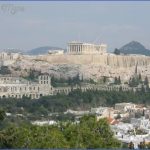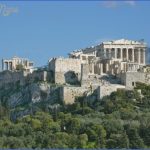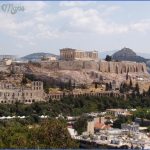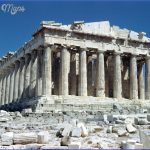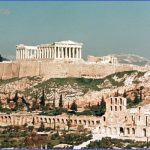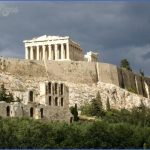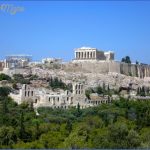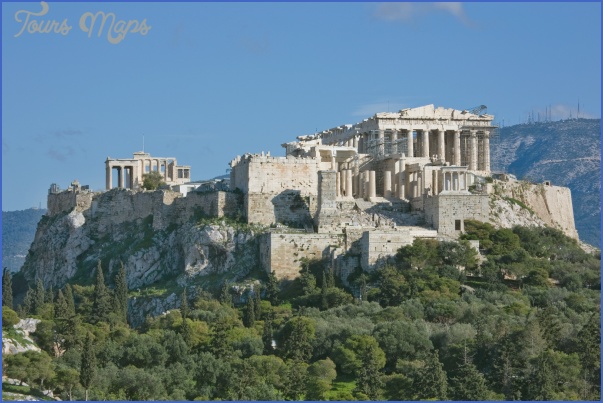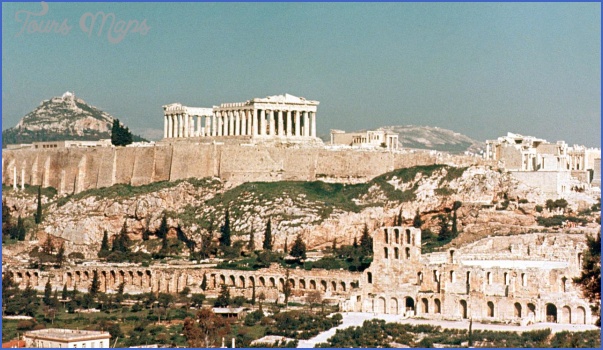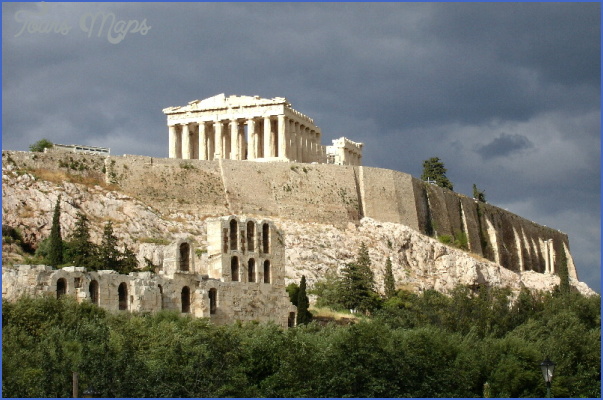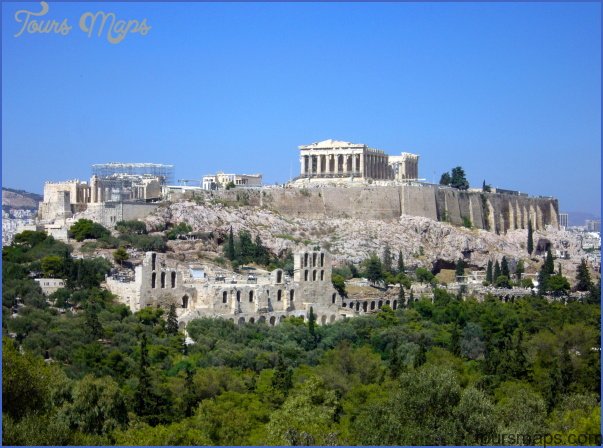ACROPOLIS
Looming majestically over the city, the Acropolis complex has been the heart of Athens since the 5th century BC. Although each Greek polis had an acropolis (high point of the city), the buildings atop Athens’s central peak outshone their imitators and continue to awe visitors today. Visit as early in the day as possible to avoid crowds and the broiling midday sun. (s210 321 0219. Open in summer daily 8am-7pm; off-season 8am-2:30pm. Admission includes access to all of the sights below the Acropolis including Hadrian’s Arch, the Olympian Temple of Zeus, and the Agora within a 48hr. period; tickets can be purchased at any of the sights. ‚12, students ‚6.)
TEMPLE OF ATHENA NIKE. This tiny cliff-side temple was raised during the Peace of Nikias (421-415 BC), a respite from the Peloponnesian War. The temple, known as the jewel of Greek architecture,” is ringed by eight miniature Ionic columns and once housed a statue of the winged goddess of victory, Nike. One day, in a paranoid frenzy, the Athenians were seized by a fear that Nike would flee the city and take peace with her, so they clipped the statue’s wings. The remains of the 5m-thick Cyclopean wall, predating the Classical Period, lie below the temple.
PARTHENON. The Temple of Athena Parthenos (Athena the virgin), more commonly known as the Parthenon, keeps vigil over Athens and the modem world. Ancient Athenians saw their city as the capital of civilization, and the metopes (scenes in the open spaces above the columns) on the sides of the Parthenon celebrate Athens’s rise. On the far right of the south side the only side that has not been defaced the Lapiths battle the Centaurs; on the east side, the Olympian gods defeat the giants; the north depicts the victory of the Greeks over the Trojans; and the west depicts their triumph against the Amazons.
ERECHTHEION. The Erechtheion, to the left of the Parthenon, was completed in 406 BC, just before Sparta defeated Athens in the Peloponnesian War. The building takes its name from the snake-bodied Erechtheus; the eastern half is devoted to the goddess of wisdom, Athena, the western half to the god of the sea, Poseidon.
ACROPOLIS MUSEUM. The museum, which neighbors the Parthenon, houses a superb collection of sculptures, including five of the original Caryatids that supported the south side of the Erechtheion. In Room Vm, notice the space that has been left for the British return of the large part of the Parthenon frieze that was taken: The Elgin marbles. The statues seem to be replicas, but a close look at the folds of their drapery reveals delicately individualized detail. (Open in summer Su and Tu-Sa 8am-7pm, M llam-7pm; off-season Su and Tu-Sa 8am-2pm, M llam-2pm.)
ELSEWHERE ON THE ACROPOLIS. The southwest corner of the Acropolis looks down over the reconstructed Odeon of Herodes Atticus, a functional theater dating from the Roman period (AD 160). See the Athens News for a schedule of concerts and plays. (Entrance on Dionissiou Areopagitou. s210 323 2771. Purchase tickets at the door or by phone.)
ACROPOLIS Photo Gallery
Maybe You Like Them Too
- Explore Nevestino, Bulgaria with this Detailed Map
- Explore Pulau Sebang Malaysia with this Detailed Map
- Explore Southgate, Michigan with this detailed map
- Explore Les Accates, France with this Detailed Map
- Explore Góra Kalwaria, Poland with this detailed map

